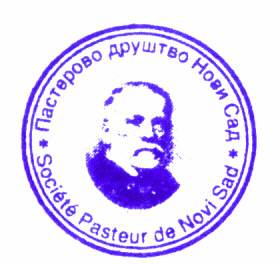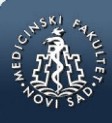md-medicaldata
Main menu:
- Naslovna/Home
- Arhiva/Archive
- Godina 2024, Broj 1
- Godina 2023, Broj 3
- Godina 2023, Broj 1-2
- Godina 2022, Broj 3
- Godina 2022, Broj 1-2
- Godina 2021, Broj 3-4
- Godina 2021, Broj 2
- Godina 2021, Broj 1
- Godina 2020, Broj 4
- Godina 2020, Broj 3
- Godina 2020, Broj 2
- Godina 2020, Broj 1
- Godina 2019, Broj 3
- Godina 2019, Broj 2
- Godina 2019, Broj 1
- Godina 2018, Broj 4
- Godina 2018, Broj 3
- Godina 2018, Broj 2
- Godina 2018, Broj 1
- Godina 2017, Broj 4
- Godina 2017, Broj 3
- Godina 2017, Broj 2
- Godina 2017, Broj 1
- Godina 2016, Broj 4
- Godina 2016, Broj 3
- Godina 2016, Broj 2
- Godina 2016, Broj 1
- Godina 2015, Broj 4
- Godina 2015, Broj 3
- Godina 2015, Broj 2
- Godina 2015, Broj 1
- Godina 2014, Broj 4
- Godina 2014, Broj 3
- Godina 2014, Broj 2
- Godina 2014, Broj 1
- Godina 2013, Broj 4
- Godina 2013, Broj 3
- Godina 2013, Broj 2
- Godina 2013, Broj 1
- Godina 2012, Broj 4
- Godina 2012, Broj 3
- Godina 2012, Broj 2
- Godina 2012, Broj 1
- Godina 2011, Broj 4
- Godina 2011, Broj 3
- Godina 2011, Broj 2
- Godina 2011, Broj 1
- Godina 2010, Broj 4
- Godina 2010, Broj 3
- Godina 2010, Broj 2
- Godina 2010, Broj 1
- Godina 2009, Broj 4
- Godina 2009, Broj 3
- Godina 2009, Broj 2
- Godina 2009, Broj 1
- Supplement
- Galerija/Gallery
- Dešavanja/Events
- Uputstva/Instructions
- Redakcija/Redaction
- Izdavač/Publisher
- Pretplata /Subscriptions
- Saradnja/Cooperation
- Vesti/News
- Kontakt/Contact
 Pasterovo društvo
Pasterovo društvo
- Disclosure of Potential Conflicts of Interest
- WorldMedical Association Declaration of Helsinki Ethical Principles for Medical Research Involving Human Subjects
- Committee on publication Ethics
CIP - Каталогизација у публикацији
Народна библиотека Србије, Београд
61
MD : Medical Data : medicinska revija = medical review / glavni i odgovorni urednik Dušan Lalošević. - Vol. 1, no. 1 (2009)- . - Zemun : Udruženje za kulturu povezivanja Most Art Jugoslavija ; Novi Sad : Pasterovo društvo, 2009- (Beograd : Scripta Internacional). - 30 cm
Dostupno i na: http://www.md-medicaldata.com. - Tri puta godišnje.
ISSN 1821-1585 = MD. Medical Data
COBISS.SR-ID 158558988
ANALIZA AUTOPSIJSKIH DIJAGNOZA FETUSA, NOVOROĐENČADI I ODOJČADI OBDUKOVANIH U CENTRU ZA PATOLOGIJU I HISTOLOGIJU KLINIČKOG CENTRA VOJVODINE U PERIODU OD JUNA 2006. DO JUNA 2016. GODINE /
ANALYSIS OF DIAGNOSIS FROM FETAL, NEWBORN AND INFANT AUTOPSY PERFORMED IN A CENTRE FOR PATHOLOGY AND HISTOLOGY, CLINICAL CENTRE OF VOJVODINA DURING THE PERIOD JUNE 2006 - JUNE 2016.
Authors
Sandra Trivunić Dajko1,2, Tijana Javorić, Nada Vučković1,2, Matilda Đolai2,3, Milan Popović3
1Katedra za patologiju, Medicinski fakultet, Univerzitet u Novom Sadu
2Centar za patologiju i histologiju, Klinički centar Vojvodine, Novi Sad, Srbija
3Katedra za histologiju i embriologiju, Medicinski fakultet, Univerzitet u Novom Sadu
UDK: 616-091.5-053.2(497.113)
The paper was received 12.01.2018. Accepted: 17.02.2018
Rad primljen 12.01.2018. Rad prihvaćen: 17.02.2018.
Corresponding author/ Autor za korespodenciju:
doc. dr Sandra Trivunić Dajko
Katedra za patologiju, Medicinski fakultet, Univerzitet u Novom Sadu
Hajduk Veljkova 3, 21 000 Novi Sad
e-mail: sandra.trivunic-dajko@mf.uns.ac.rs
Sažetak
Uvod: Ključni ciljevi svake autopsije su indentifikacija uzroka smrti, objašnjenje patogenih mehanizama i kontrola kvaliteta kliničkih postupaka. Osnovni ciljevi fetalne ili perinatalne autopsije su nešto specifičniji i kompleksiniji, a sastoje se od utvrđivanja gestacijske starosti, stepena razvoja ploda, prisustva kongenitalnih anomalija, analize kliničkih dijagnoza i sprovedene terapije, kao i određivanja mogućih uzoka smrti i eventualnih rizika od ponovljene fetalne smrti.
Materija i metode: U retrospektivnoj, desetogodišnjoj studiji analizirane su autopsijske dijagnoze obdukovanih, demografski parametri, kao i uzroci smrti obdukovanih u Centru za patologiju i histologiju, Kliničkog centra Vojvodine. Od ukupno 2 283 obdukcije, u periodu od juna 2006. godine do juna 2016. godine, analizirani su najčešći uzroci smrti kod fetusa, novorođenčadi i odojčadi. Urađena je i analiza malformacija ploda, kao i prisustvo različitih sindroma. Prikazane su i najčešće kliničke indikacije artificijalnih abortusa, kao i korelacija između kliničkih i autopsijskih dijagnoza.
Rezultati: Najčešći uzrok smrti kod fetusa ostao je nepoznat i to u 85,3%, dok je kod odojčadi i novorođenčadi to periferna asfiksija, u 31% odnosno 42% obdukovanih slučajeva. Korelacija između kliničkih i autopsijskih dijagnoza postoji u 96% slučajeva. Najzastupljenije malformacije ploda su multiple malformacija u 46%, zatim slede malformacije CNS (24%) i gastrointestinalnog trakta sa udelom od 10%. Od ukupnog broja sindroma (182), kao najzastupljeniji izdvaja se Down-ov sindrom sa udelom od 65%.
Zaključak: U toku sprovođenja fetalne autopsije, treba se voditi predloženim protokolima, koje daju brojna inostrana udruženja patologa. Fetalne ili perinatalne obdukcija, kao i obdukcije generalno su često ogledalo stepena razvoja društva i njegovog ulaganja u zdravstveni sistem, odnosno društvene i epidemiološke situacije.
Ključne reči:
autopsije, uzrok smrti, fetus, novorođenče, odojče, sindromi
Abstract
Introduction: The main goals of every autopsy are identification of the cause of death, explanation of pathogenic mechanisms and quality control of clinical procedures. The basic aims of the fetal and perinatal autopsies are more specific and more complex, and include the determination of gestational age, maturity of the fetus, the presence of congenital anomalies, analysis of clinical diagnosis and performed therapy, as well as the determination of possible causes of death and potential risk of a fetal death. Material and methods: In this ten-year retrospective study, we analyzed autopsical diagnosis, demographic parameters, as well as the causes of death in autopsied patients in the Center of Pathology and Histology, Clinical Center of Vojvodina. Of the total 2 283 autopsied, in the time period from June 2006 to June 2016, we analyzed the most common causes of death of fetus, newborns and infants. Also, it was done analysis of malformations of the fetus, as the presence of various syndromes. The study also shows the most common clinical indication for artificial abortions, as well as the correlation between clinical and autopsical diagnosis. Results: The most common couse of fetal death remained unknown in 85.3%, while in infnts and newborns it was perinatal asphyxia in 31% and 42% of autopsied cases. Correlation between clinical and autopsy diagnosis was 96%. The most common malformations of the fetus are multiple malformations in 42%, followed by malformations of CNS (24%) and gastrointestinal tract with a share of 10%. Of the total number of syndromes the most common syndrome is Down's syndrome with a share of 65%. Conclusion: During fetal autopsy we should be guided with protocols suggested by numerous foreign pathologist associations. Fetal or perinatal autopsy, autopsy as generally, are often a mirror of society and development of their investments in the healthcare system, as well as mirror of the social and epidemiological situation.
Key words:
autopsies, cause of death, fetus, newborn, infant, syndrome
Reference / Literatura
- Osterheld MC. Perinatal Autopsy and Placental Examination an Important Contribution to Diagnosis and Follow-up after a Fetal Loss. Prev Ped. 2015;1:11-4.
- Pradhan R, Mondal S, Adhya S, Raychaudhuri G. Perinatal autopsy: A study from India. J Indian Acad Forensic Med. 2013;35(1):10-3.
- Désilets V, Oligny LL, Wilson RD, Allen VM, Audibert F, Blight C. Fetal and perinatal autopsy in prenatally diagnosed fetal abnormalities with normal karyotype. J Obstet Gynaecol Can. 2011;33(10):1047-57.
- Guidelines on autopsy practice: Fetal autopsy (2nd trimester fetal loss and termination of pregnancy for congenital anomaly) [Internet]. London: The Royal College of Pathologists. 2017 Jun 15 - [cited 2017 Dec 28]. Available from: https://www.rcpath.org/resourceLibrary/fetal-autopsy--2nd-trimester-fetal-loss-and-termination-of-pregnancy-for-congenital-anomaly-.html
- Clinical Guideline Investigation of Stillbirths: SA protocol [Internet]. Department for Health and Ageing, Government of South Australia. 2012 Sept 18 – [cited 2017 Dec 28]. Available from:http://www.sahealth.sa.gov.au/wps/wcm/connect/1b6290804ee4e1d88d308dd150ce4f37/investigation+of+stillbirths+sa+protocol_27042016.pdf?MOD=AJPERES&CACHEID=ROOTWORKSPACE-1b6290804ee4e1d88d308dd150ce4f37-lNuWvSS.
- Clinical Practice Guideline for Perinatal Mortality: Perinatal postmortem examination. [Internet] Perinatal Society of Australia and New Zealand; 2009 April. [cited 2017 Dec 30]. Available from: http://www.stillbirthalliance.org.au/doc/Section_4_Version_2.2_April_2009.pdf.
- Jaiman S. Performing a perinatal autopsy. J Fetal Med. 2015;2:101-11.
- Lewis C, Hill M, Arthurs OJ, Hutchinson C, Chitty L, Sebire NJ. Factors affecting uptake of postmortem examination in the prenatal, perinatal and paediatric setting. BJOG. 2018;125(2):172-81.
- Woodbury RM. Causal factors in infant mortality: a statistical study based on investigations in eight cities. Popline. 1925;125-27.
- Piercecchi-Marti MD1, Liprandi A, Sigaudy S, Fredouille C, Adalian P, Figarella-Branger D, et al. Value of fetal autopsy after medical termination of pregnancy. Forensic Sci Int. 2004;144(1):7-10.
- Rodin U, Filipović-Grčić B, Ćorić T, Juras J. Perinatal deaths causes in Croatia in the year 2013. Gynaecol Perinatol. 2014;23(1):19-24.
- Fatima U, Sherwani R, Khan T, Zaheer S. Foetal Autopsy-Categories and Causes of Death. J Clin Diagn Res. 2014;8(10):FC05-8
- Bonetti R, Ferrari P, Trani N, Maccio L, Laura S, Giuliana S, Facchinetti F. The role of fetal autopsy and placental examination in the causesof fetal death: a retrospective study of 132 cases of stillbirths. Arch Gynecol Obstet. 2011;283(2):231-41.
- Adair FL, Potter LE. Fetal and neonatal mortality with recommendations for reduction. Am J Public Health Nations Health. 1936 Mar;26(3):281-6.
- Roescher AM, Timmer A, Erwich JJ, Bos AF. Placental pathology, perinatal death, neonatal outcome, and neurological development: a systematic review. PLoS One. 2014 Feb 25;9(2):e89419.
- Gilbert-Barness E, Debich-Spricer D. Embrio and fetal Pathology. Cembridge: Cambridge University Press. pp. 45-74.
- Agrawal V, David RJ, Harris VJ. Classification of acute respiratory disorders of all newborns in a tertiary care center. J Natl Med Assoc. 2003;95(7):585-95.
- Ngoc NT, Merialdi M, Abdel-Aleem H, Carroli G, Purwar M, Zavaleta N, et al. Causes of stillbirths and early neonatal deaths: data from 7993 pregnancies in six developing countries. Bulletin of the World Health Organization. 2006;84(9):699-705.
- Tennstedt C, Chaoui R, Bollmann R, Körner H, Dietel M. Correlation of prenatal ultrasound diagnosis and morphological findings of fetal autopsy. Pathol Res Pract. 1998;194(10):721-4.
- Boyd PA, Tondi F, Hicks NR, Chamberlain PF. Autopsy after termination of pregnancy for fetal anomaly: retrospective cohort study. BMJ. 2004;328(7432):137
- Akgun H, Babug M, Ozgun MT, Canoz O, Tokat F, Nurcan M, et al. Correlation between prenatal ultrasound and fetal autopsy findings in fetal anomalies terminated in the second trimester. Prenat Diagn. 2007;27(5):457-62.
- Kumar V., Abbas A.K., Fausto N., Mitchells R. Robins Basic Patologh, 8e 2007. Osnove Robinsonove patologije :Dečije bolesti. Preveli i uredili Borčić I., Brašanac D., Đurčić S.,Tomanović N., Vučković D., Vučković N., Todorović V., Vujanić G. Beograd. 2010. 252-77.
- Sherman SL, Allen EG, Bean LH, Freeman SB.. Epidemiology of Down syndrome. Ment Retard Dev Disabil Res Rev. 2007;13(3):221-7.
- Papp C, Szigeti Z, Joó JG, Tóth-Pál E, Hajdú J, Papp Z. The role of perinatal autopsy in the management of pregnancies with major fetal trisomies. Pathol Res Pract. 2007;203(7):525-31.
- Amini H. Comparison of ultrasound and autopsy findings in pregnancies terminated due to fetal anomalies. Acta Obstet Gynecol Scand. 2006;85(10):1208-16.
- Sankar VH, Phadke SR. Clinical utility of fetal autopsy and comparison with prenatal ultrasound findings. J Perinatol. 2006;26(4):224–9.
- Carroll SGM. Correlation of perinatal ultrasound diagnosis and pathologic findings in fetal brain abnormalities. Ultrasound Obstet Gynecol. 2008;16:149-53.
- Rossi AC, Prefumo F. Correlation between fetal autopsy and prenatal diagnosis by ultrasound: A systematic review. Eur J Obstet Gynecol Reprod Biol. 2017;210:201-6.
PDF Trivunić Dajko S. et al • MD-Medical Data 2018;10(1): 039-044
 Medicinski fakultet
Medicinski fakultet